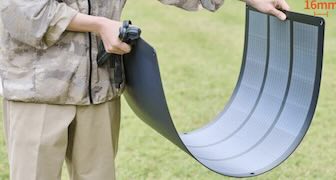Jun 28 (phys.org) - Owing to the high competition and the prevalence of natural selection, many male insects must develop alternative tactics to mate with a female.
Weaker males who lose in a competition (or loser males) may resort to hovering or sneaking around in order to find a mate. Recent studies have also shown that alternative mating behavior is influenced by environmental factors such as food availability, predation, and population density. For example, scorpionflies—which are often used to study the mating behavior of insects—use three alternative mating tactics—gifting nutritious saliva, gifting food, and forced mating—to obtain a mate. Male Japanese scorpionflies also employ feeding mating (i.e., mating while females feed without gifting them anything or releasing pheromones).
Previous studies looking at alternative mating tactics in scorpionflies have shown that the weaker males of closely-related species employ varying methods to procreate, however no research has been done to find the alternative mating tactics of males within the same species from different geographical locations. To this end, Dr. Ryo Ishihara (who is affiliated to the School of Agriculture and a recipient of the Special Educational and Research Fellowship) and Professor Takahisa Miyatake (from the Faculty of Environmental and Life Science) of Okayama University, Japan, published a study in the Journal of Ethology on 15 June 2022. This study details the differences in alternative mating tactics of Japanese scorpionflies hailing from two different places—the Aichi and Okayama prefectures in Japan. ...continue reading















